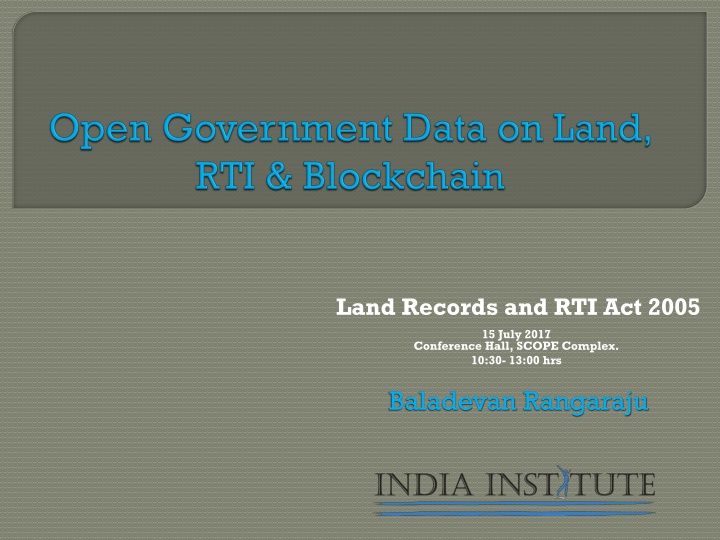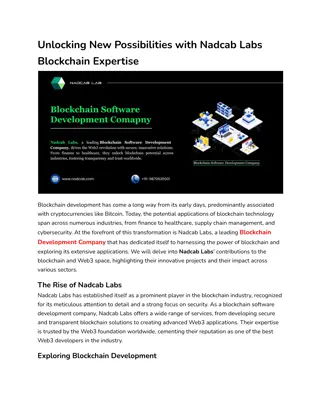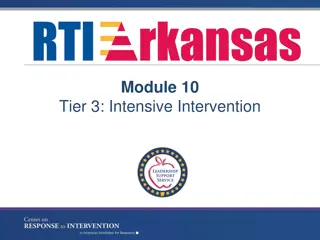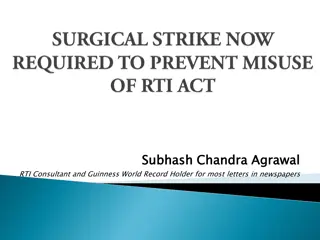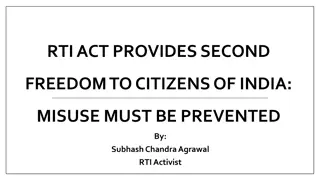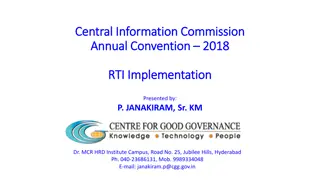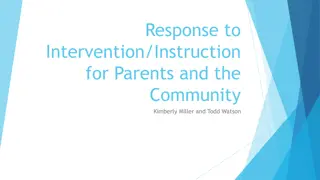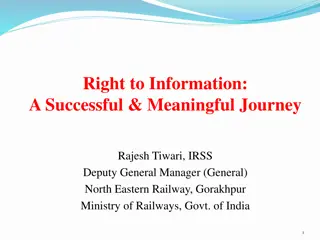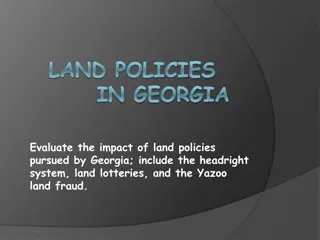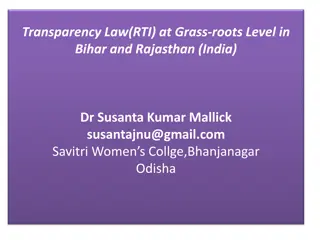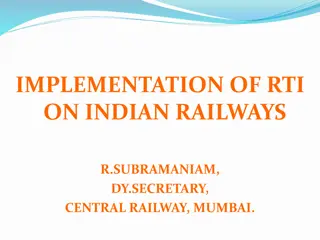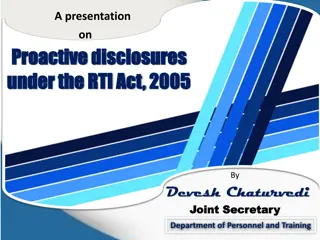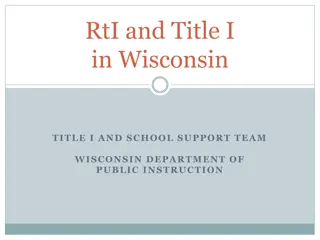Baladevan Rangaraju
This content delves into the importance of transparency in land governance, challenges in record-keeping, and the impact of RTI Act 2005 on land matters. It highlights discrepancies in records, the need for digitization, and major challenges in disclosure and accessibility of land data.
Download Presentation

Please find below an Image/Link to download the presentation.
The content on the website is provided AS IS for your information and personal use only. It may not be sold, licensed, or shared on other websites without obtaining consent from the author.If you encounter any issues during the download, it is possible that the publisher has removed the file from their server.
You are allowed to download the files provided on this website for personal or commercial use, subject to the condition that they are used lawfully. All files are the property of their respective owners.
The content on the website is provided AS IS for your information and personal use only. It may not be sold, licensed, or shared on other websites without obtaining consent from the author.
E N D
Presentation Transcript
Land Records and RTI Act 2005 15 July 2017 Conference Hall, SCOPE Complex. 10:30- 13:00 hrs Baladevan Rangaraju
Section 4 Section 4(1)(b)(v) states that every public authority shall publish within one hundred and twenty days from the enactment of this Act,the rules, regulations, instructions, manuals and records, held by it or under its control or used by its employees for discharging its functions. Section 2(i) defines record as, "record" includes any document, manuscript and file; any microfilm, microfiche and facsimile copy of a document; any reproduction of image or images embodied in such microfilm (whether enlarged or not); and any other material produced by a computer or any other device. CIC in Surender Pal Singh v. Sub Divisional Magistrate- Transparency is the only way by which corruption can be prevented. Hence the record should be made easily accessible to the people, so that aggrieved person can point out the discrepancies/mistakes/conflicts/contradictions which can be corrected
E-governance Digitisation of land records First Rights Act
Total RTIs filed since 2005 pertaining to Land Matters to Revenue Dept. (Dy. Commissioners and HQ) of Delhi = 3034 Sample size of 997 RTIs was taken from the above specified RTIs. Out of the 997 RTIs, 389 (39%) of them were questions pertaining to land records
Never recorded lands Discrepancies in Records Records of disputed land Will lack historical data Lack of SOP for re-survey
Inconsistency between manual data and online data Failure to reflect true nature of ownership Problems in credit transactions Vulnerability to cyber attacks Loss of time Technical issues Delay in updating Exploitation by land mafia Easy alteration violates the law Reliance on government functionaries Non integration with registration database
Major Challenges in Disclosure Lack of clarity on content falling under section 4 Accessibility of disclosed content Secrecy approach to Land Affairs A uniform format for the data base across the country Clarity of what is and what is not available
Right tool and design (SoP) for transparent and accountable implementation of re-survey and documenting all land parcels Local level public hearings and time bound resolution of claims and discrepancies Build a strong IT backbone with a policy framework for agencies handling data Enter into master database on blockchain records of only those localities where the records are cleaned and complete Once a locality has entered the master database, all future land related transactions should be on blockchain The structure of land records database should be similar across the country Equip Revenue/ Land Records Department PIOs with a flowchart to identify requested info in the master database
indiapropertyrights.org indiaI.org i-torney.com IndiaInstitute India_Institute IndiaInstituteTV
